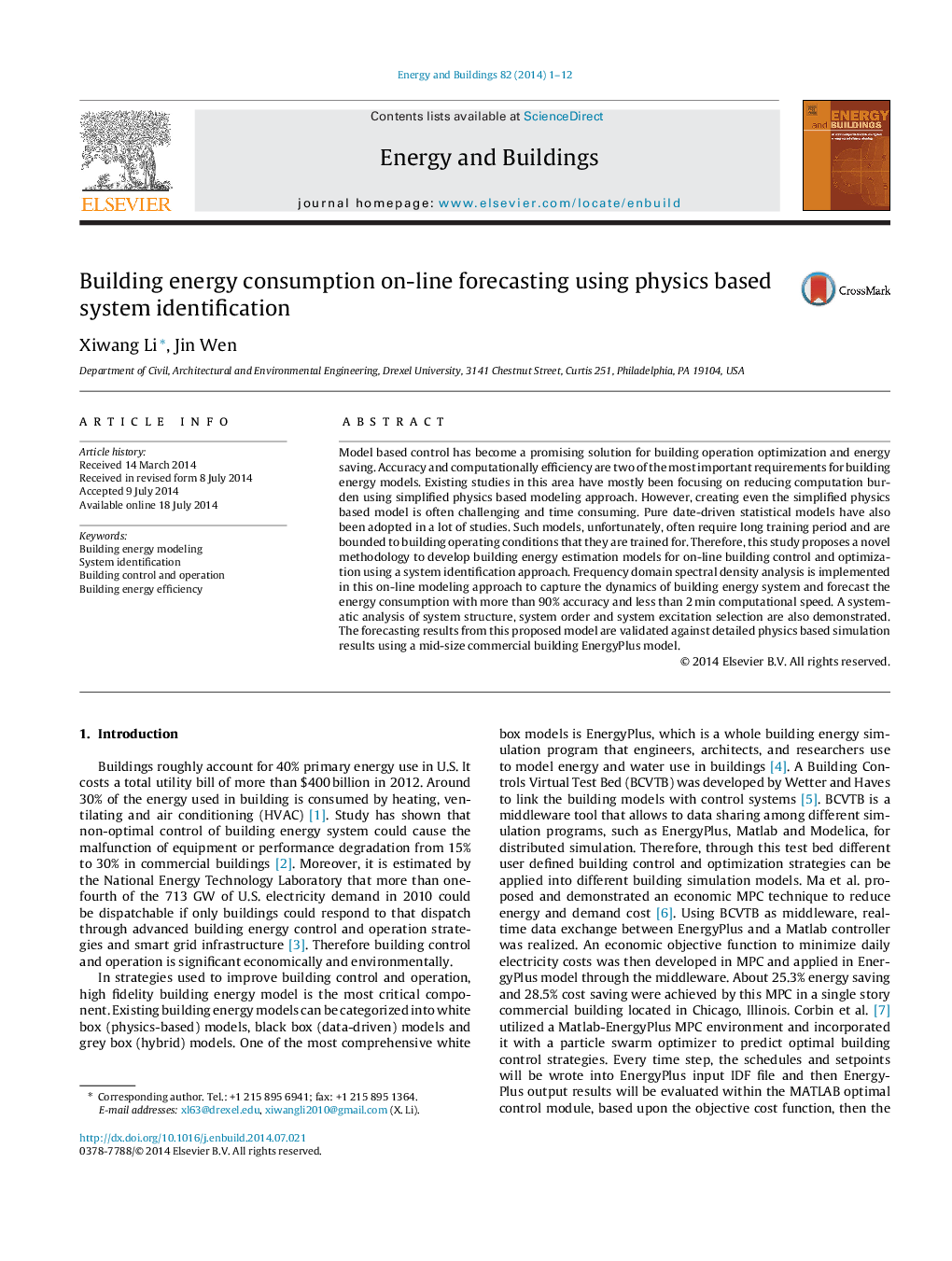| Article ID | Journal | Published Year | Pages | File Type |
|---|---|---|---|---|
| 262644 | Energy and Buildings | 2014 | 12 Pages |
•Building physics based system identification methodology has been proposed.•Frequency response function has been utilized to capture the building dynamics.•A systematic building excitation method has been proposed and demonstrated.•Over 90% accuracy can be achieved in less than 2 min calculation time.
Model based control has become a promising solution for building operation optimization and energy saving. Accuracy and computationally efficiency are two of the most important requirements for building energy models. Existing studies in this area have mostly been focusing on reducing computation burden using simplified physics based modeling approach. However, creating even the simplified physics based model is often challenging and time consuming. Pure date-driven statistical models have also been adopted in a lot of studies. Such models, unfortunately, often require long training period and are bounded to building operating conditions that they are trained for. Therefore, this study proposes a novel methodology to develop building energy estimation models for on-line building control and optimization using a system identification approach. Frequency domain spectral density analysis is implemented in this on-line modeling approach to capture the dynamics of building energy system and forecast the energy consumption with more than 90% accuracy and less than 2 min computational speed. A systematic analysis of system structure, system order and system excitation selection are also demonstrated. The forecasting results from this proposed model are validated against detailed physics based simulation results using a mid-size commercial building EnergyPlus model.
